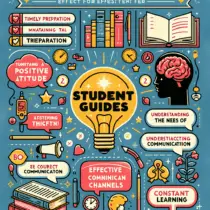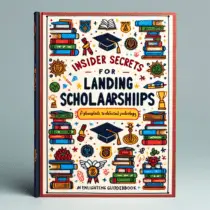The United States is known for its prestigious universities and outstanding academic programs, making it a popular destination for international students seeking higher education. However, the cost of studying in the USA can be a significant barrier for many students. Luckily, there are numerous scholarships available for international students to help fund their education and make their dreams of studying in the US a reality.
Scholarships can provide financial assistance for tuition, fees, books, and living expenses, alleviating the financial burden on students and their families. In this article, we will explore the various scholarships available for international students in the USA, how to apply for them, and tips for increasing your chances of receiving funding. Whether you are pursuing an undergraduate degree, a graduate program, or a research opportunity in the US, there are scholarships out there to support your educational journey. Read on to discover how you can fund your education through scholarships as an international student in the USA.
**Types of Scholarships Available**
There are several types of scholarships available for international students in the USA. These scholarships are offered by universities, government agencies, non-profit organizations, and private donors. Here are some common types of scholarships that international students can apply for:
1. **Merit-Based Scholarships**: Merit-based scholarships are awarded based on academic achievement, standardized test scores, extracurricular activities, and other factors that demonstrate a student’s potential for success in higher education. These scholarships are highly competitive but can provide substantial financial support.
2. **Need-Based Scholarships**: Need-based scholarships are awarded to students who demonstrate financial need based on their family’s income and assets. These scholarships aim to make higher education more accessible to students from low-income backgrounds.
3. **Specific Field Scholarships**: Some scholarships are specifically designed for students pursuing degrees in certain fields such as STEM (Science, Technology, Engineering, and Mathematics), business, healthcare, or arts. These scholarships may require applicants to meet certain criteria or demonstrate interest and proficiency in a particular field.
4. **Country-Specific Scholarships**: Some universities offer scholarships specifically tailored to students from certain countries or regions. These scholarships may be based on cultural exchange programs or partnerships between institutions in different countries.
**How to Apply for Scholarships**
Each scholarship has its own set of requirements and application process that prospective applicants must follow. Here are some general steps to help you navigate the scholarship application process as an international student:
1. **Research Scholarship Opportunities**: Start by researching scholarship opportunities available at universities where you plan to study or through external organizations that offer funding for international students in the USA.
2. **Review Eligibility Criteria**: Carefully review the eligibility criteria for each scholarship to ensure that you meet all requirements before applying.
3. **Prepare Required Documents**: Gather all necessary documents such as transcripts, letters of recommendation, personal statements or essays, proof of English proficiency (such as TOEFL or IELTS scores), and any other materials requested by the scholarship provider.
4. **Submit Your Application**: Complete and submit your application by the deadline specified by the scholarship provider. Be sure to follow all instructions carefully and double-check your application before submitting it.
5. **Follow Up**: After submitting your application, follow up with the scholarship provider if you do not receive a response within a reasonable time frame. Keep track of important dates such as notification deadlines and award disbursement timelines.
**Tips for Increasing Your Chances of Receiving Funding**
While securing scholarships as an international student in the USA can be competitive, there are several strategies you can use to increase your chances of receiving funding:
1. **Start Early**: Begin researching scholarship opportunities well in advance of your intended start date at a university in the USA. Some scholarships have early application deadlines that you need to be aware of.
2 .**Maintain Strong Academic Performance:** Maintain high grades throughout your academic career as many merit-based scholarships require applicants to have a strong academic record.
3 .**Get Involved:** Participate in extracurricular activities or community service projects that showcase your leadership skills and commitment to making a positive impact on society.
4 .**Seek Letters Of Recommendation:** Ask teachers or mentors who know you well to write letters of recommendation highlighting your strengths and achievements.
5 .**Craft A Compelling Personal Statement:** Write a compelling personal statement or essay that explains why you deserve a scholarship and how it aligns with your academic goals and career aspirations.
**FAQ**
Q: Can international students apply for federal financial aid?
A: International students are not eligible for federal financial aid programs offered by the US government but can explore other scholarship opportunities available through universities or private organizations.
Q: Are there full-ride scholarships available for international students?
A: Yes! Some universities offer full-ride scholarships that cover tuition fees plus living expenses for exceptional international students.
Q: Do I need to have an acceptance letter from a US university before applying for scholarships?
A: It is not always necessary to have an acceptance letter before applying for some external scholarship programs; however,r having admission confirmation may strengthen your application.






